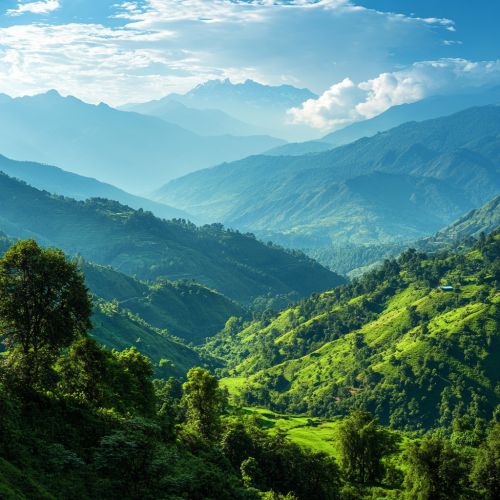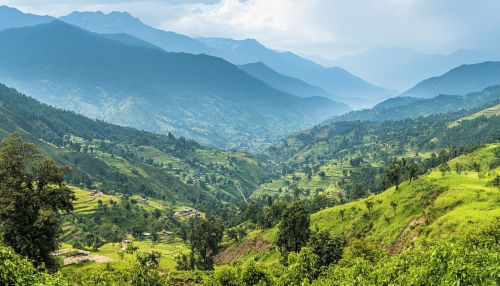North Indians: Difference between revisions
(Created page with "==Introduction== North India, a region of immense cultural, historical, and geographical diversity, is a significant part of the Indian subcontinent. It comprises several states and union territories, each contributing uniquely to the region's identity. The term "North Indians" refers to the people inhabiting this region, known for their rich traditions, languages, and vibrant cultures. This article delves into the various aspects of North Indians, including their demog...") |
No edit summary |
||
| Line 7: | Line 7: | ||
North India is bordered by the Himalayas to the north, the Thar Desert to the west, and the Indo-Gangetic Plain, which stretches across the region. The states generally considered part of North India include [[Uttar Pradesh]], [[Punjab]], [[Haryana]], [[Himachal Pradesh]], [[Uttarakhand]], [[Jammu and Kashmir]], and the union territories of [[Chandigarh]] and [[Delhi]]. The region is characterized by diverse landscapes, ranging from the snow-capped peaks of the Himalayas to the fertile plains of the Ganges and Yamuna rivers. | North India is bordered by the Himalayas to the north, the Thar Desert to the west, and the Indo-Gangetic Plain, which stretches across the region. The states generally considered part of North India include [[Uttar Pradesh]], [[Punjab]], [[Haryana]], [[Himachal Pradesh]], [[Uttarakhand]], [[Jammu and Kashmir]], and the union territories of [[Chandigarh]] and [[Delhi]]. The region is characterized by diverse landscapes, ranging from the snow-capped peaks of the Himalayas to the fertile plains of the Ganges and Yamuna rivers. | ||
[[Image:Detail-98431.jpg|thumb|center|Panoramic view of the Himalayan mountains with lush green valleys in the foreground.|class=only_on_mobile]] | |||
[[Image:Detail-98432.jpg|thumb|center|Panoramic view of the Himalayan mountains with lush green valleys in the foreground.|class=only_on_desktop]] | |||
==Demographics== | ==Demographics== | ||
Latest revision as of 23:08, 10 October 2024
Introduction
North India, a region of immense cultural, historical, and geographical diversity, is a significant part of the Indian subcontinent. It comprises several states and union territories, each contributing uniquely to the region's identity. The term "North Indians" refers to the people inhabiting this region, known for their rich traditions, languages, and vibrant cultures. This article delves into the various aspects of North Indians, including their demographics, culture, languages, and socio-economic conditions.
Geographical Overview
North India is bordered by the Himalayas to the north, the Thar Desert to the west, and the Indo-Gangetic Plain, which stretches across the region. The states generally considered part of North India include Uttar Pradesh, Punjab, Haryana, Himachal Pradesh, Uttarakhand, Jammu and Kashmir, and the union territories of Chandigarh and Delhi. The region is characterized by diverse landscapes, ranging from the snow-capped peaks of the Himalayas to the fertile plains of the Ganges and Yamuna rivers.


Demographics
The population of North India is diverse, with a mix of ethnic groups, religions, and cultures. According to the latest census, the region is home to over 500 million people, making it one of the most densely populated areas in the world. The major ethnic groups include Indo-Aryans, Dravidians, and Tibeto-Burmans. The predominant religions are Hinduism, Islam, Sikhism, and Buddhism, with smaller communities of Christians and Jains.
Ethnic Composition
North India's ethnic composition is primarily Indo-Aryan, with significant Dravidian and Tibeto-Burman influences in certain areas. The Indo-Aryans are believed to have migrated from Central Asia, bringing with them the Vedic culture, which has significantly shaped the region's cultural and religious landscape.
Religious Diversity
The religious diversity of North India is a testament to its historical role as a melting pot of cultures. Hinduism is the dominant religion, with numerous temples and pilgrimage sites spread across the region. Islam has a significant presence, especially in areas like Jammu and Kashmir and Uttar Pradesh. Sikhism, founded in the Punjab region, is practiced by a large community, with the Golden Temple in Amritsar being a major religious site. Buddhism, which originated in North India, has several important sites, including Bodh Gaya and Sarnath.
Languages
North India is linguistically diverse, with several languages spoken across the region. The major languages include Hindi, Punjabi, Urdu, Kashmiri, and Dogri. Hindi, written in the Devanagari script, is the most widely spoken language and serves as the lingua franca of the region.
Hindi
Hindi, an Indo-Aryan language, is the official language of India and is spoken by a majority of North Indians. It has numerous dialects, including Bhojpuri, Awadhi, and Braj Bhasha, each with its unique linguistic features.
Punjabi
Punjabi, another major language, is predominantly spoken in the state of Punjab. It is written in the Gurmukhi script and is the mother tongue of the Sikh community. Punjabi literature and music have a rich tradition, contributing significantly to the cultural tapestry of North India.
Urdu
Urdu, with its roots in Persian and Arabic, is widely spoken in Uttar Pradesh and Delhi. It is the official language of Jammu and Kashmir and has a rich literary heritage, particularly in poetry and prose.
Cultural Heritage
North India's cultural heritage is a blend of ancient traditions and modern influences. The region is known for its classical music, dance forms, festivals, and cuisine, each reflecting the diverse cultural influences that have shaped it over centuries.
Music and Dance
North Indian music is primarily based on the Hindustani classical music tradition, which includes various forms like Khyal, Dhrupad, and Thumri. The region is also known for its folk music, with each state having its unique style. Dance forms such as Kathak, Bhangra, and Gidda are popular, showcasing the region's vibrant cultural expressions.
Festivals
Festivals in North India are celebrated with great enthusiasm and are an integral part of the cultural landscape. Major festivals include Diwali, Holi, Eid, Baisakhi, and Lohri. These festivals are marked by elaborate rituals, music, dance, and feasting, reflecting the region's rich cultural diversity.
Cuisine
North Indian cuisine is renowned for its rich flavors and diverse dishes. Staples include wheat-based products like roti and naan, along with a variety of lentils, vegetables, and meats. Popular dishes include butter chicken, paneer tikka, chole bhature, and biryani. The use of spices such as cumin, coriander, and garam masala is characteristic of North Indian cooking.
Socio-Economic Conditions
North India's socio-economic landscape is marked by both progress and challenges. The region has witnessed significant economic growth, driven by sectors like agriculture, manufacturing, and services. However, issues such as poverty, unemployment, and inadequate infrastructure remain pressing concerns.
Agriculture
Agriculture is the backbone of North India's economy, with the fertile Indo-Gangetic Plain being one of the most productive agricultural regions in the world. Major crops include wheat, rice, sugarcane, and pulses. The Green Revolution played a crucial role in transforming the agricultural landscape, leading to increased productivity and food security.
Industry and Services
The industrial sector in North India is diverse, with significant contributions from textiles, automobiles, and information technology. Cities like Gurugram and Noida have emerged as major IT hubs, attracting investment and talent from across the country. The services sector, particularly in finance, education, and healthcare, has also seen substantial growth.
Challenges
Despite economic progress, North India faces several socio-economic challenges. Poverty and unemployment remain significant issues, particularly in rural areas. Infrastructure development, including roads, electricity, and water supply, is inadequate in many parts of the region. Additionally, social issues such as gender inequality and access to education continue to hinder development.
Conclusion
North India is a region of immense diversity and complexity, with a rich cultural heritage and significant socio-economic potential. The people of North India, with their unique traditions, languages, and lifestyles, contribute to the vibrant tapestry of the Indian subcontinent. While the region faces several challenges, its dynamic population and cultural richness offer immense opportunities for growth and development.
